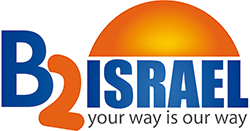Israel – Government, History, Geography
About
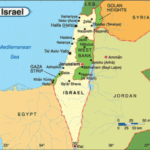 Israel is a country in the Middle East, on the narrow region connecting Africa and Asia. The State of Israel occupies most of the region known as the Land of Israel. Israel is a developed country, located in a region that is geographically and climatically diversified. There are snow-capped mountains in the north alongside dry wildernesses in the south, and desolate areas alongside modern lively cities. Israel’s ethnic and religious mosaic is rich and fascinating, and it has numerous cultural institutions and entertainment centers. Thanks to its rich history and sanctity for the three monotheistic religions, it has many ancient and holy sites. Most of the year, the climate in Israel is pleasant, and you can tour the country the whole year round.
Israel is a country in the Middle East, on the narrow region connecting Africa and Asia. The State of Israel occupies most of the region known as the Land of Israel. Israel is a developed country, located in a region that is geographically and climatically diversified. There are snow-capped mountains in the north alongside dry wildernesses in the south, and desolate areas alongside modern lively cities. Israel’s ethnic and religious mosaic is rich and fascinating, and it has numerous cultural institutions and entertainment centers. Thanks to its rich history and sanctity for the three monotheistic religions, it has many ancient and holy sites. Most of the year, the climate in Israel is pleasant, and you can tour the country the whole year round. The State Emblems
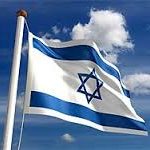 The flag of the State of Israel is composed of two blue stripes against a white background, with a blue Shield of David (hexagram) between them.
The flag of the State of Israel is composed of two blue stripes against a white background, with a blue Shield of David (hexagram) between them.
The national anthem of the State of Israel is Hatikvah (“The Hope”). The lyrics were written by the poet, Naphtali Herz Imber (1856–1909), and the melody is a Romanian folk song quoted by the Czech composer, Bedrich Smetena, in his cycle “My Homeland.” In 1933, Hatikvah was chosen as the Zionist movement’s anthem and, upon the establishment of the State of Israel, was accepted as the national anthem. However, the song was only officially recognized by the Knesset as Israel’s national anthem in 2004.
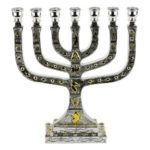 The emblem of the State of Israel is the seven-branched menorah (candelabrum) with olive branches at both sides, and with the name, Israel, appearing beneath. The source of the Menorah is an engraving on the Arch of Titus in Rome, depicting the victory march of the Roman commander, Titus, after he crushed the Great Revolt of the Jews against the Romans and destroyed the Temple in 70 CE. The source of the olive branches is a prophecy of the prophet Zechariah. The candelabrum of the Temple in Jerusalem engraved on the Arch of Titus symbolizes not only the illustrious past of the people of Israel, but also its defeat and the beginning of its exile. So, the choice of this specific candelabrum not only linked the new state to its illustrious past – it also, so to speak, brought the Menorah back from its long exile, thus indirectly symbolizing the end of the Diaspora.
The emblem of the State of Israel is the seven-branched menorah (candelabrum) with olive branches at both sides, and with the name, Israel, appearing beneath. The source of the Menorah is an engraving on the Arch of Titus in Rome, depicting the victory march of the Roman commander, Titus, after he crushed the Great Revolt of the Jews against the Romans and destroyed the Temple in 70 CE. The source of the olive branches is a prophecy of the prophet Zechariah. The candelabrum of the Temple in Jerusalem engraved on the Arch of Titus symbolizes not only the illustrious past of the people of Israel, but also its defeat and the beginning of its exile. So, the choice of this specific candelabrum not only linked the new state to its illustrious past – it also, so to speak, brought the Menorah back from its long exile, thus indirectly symbolizing the end of the Diaspora.
Form of Rule in Israel
The State of Israel is a parliamentary democracy, headed by the president, whose role is essentially symbolic and representative. The country is, in fact, managed by three authorities: the legislative authority (the Knesset), the executive authority (the government), and the judiciary authority.
The legislative authority in Israel is the Knesset (the name of the parliament in Israel), which has 120 members chosen in general elections once every four years. The Knesset enacts laws, makes political decisions, chooses the president and the government, and supervises the government’s activity.
The executive authority in Israel is the government. It is responsible for executing the laws enacted by the Knesset and for the proper governance of the State. The prime minister is a Knesset member whom the president charged with the role of forming the government, and who formed a government that gained the confidence of the Knesset. Since the establishment of the state, no single party has enjoyed an absolute majority in the Knesset. Therefore, all of Israel’s governments have always been coalition governments.
The third authority in Israel is the judiciary, which is responsible for maintaining law in the state. At the head of the legal system stands the Supreme Court. It hears appeals against judgments of the lower courts, and also sits as a High Court of Justice for petitions submitted by civilians against the State authorities. Besides the ordinary, or civilian, legal system, Israel has courts which the law has bestowed with unique authority in specific matters. Among these courts are the Labor Court, the Military Court, and the religious courts (Jewish, Muslim, Christian and Druze), which deal with matters of personal status such as marriage and divorce.
Israel’s Economy
 The Israeli economy is a success story. Even though it has hardly any natural resources, and in spite of wars and waves of immigration that have placed an enormous burden on it, Israel is among the most prosperous countries in the world. Two reasons for Israel’s economical success are direct external aid, totaling at least some $108 billion to date, and an educated work force.
The Israeli economy is a success story. Even though it has hardly any natural resources, and in spite of wars and waves of immigration that have placed an enormous burden on it, Israel is among the most prosperous countries in the world. Two reasons for Israel’s economical success are direct external aid, totaling at least some $108 billion to date, and an educated work force.
Since its establishment, Israel’s exports of goods and services have grown from some 30 million dollars a year to approximately $2.98 billion a year. Over this period, many changes have occurred in the Israeli economy. In the beginning, the state’s main exports were citrus fruit, as well as processed diamonds and some industrial products. Today, however, most of its exports consist of the products of high-tech industries in diverse areas such as electronics, software, hardware, optics, communications and medical instrumentation.
In the course of time, Israel’s economical ideology has also changed. In the beginning, the economy was prominently centralist, characterized by major state involvement in economic activity. Following political change in 1977, Israel’s governments have adopted a more liberal economical policy.
The GDP of the Israeli economy is some $179 billion, while the GDP per person is some $27,300, ranking Israel 21st when compared to the Organization for Economic Cooperation and Development member countries in 2008. Its exports of goods and services total some $2.98 billion a year, while its imports total some $3.3 billion a year. Its annual growth rate in 2008 was about 4.1%, the inflation rate as of early 2009 was around 3.4%, and the unemployment rate as of early 2009 was 6.8%. The Israeli economy’s predominant sector is high-tech, which became the driving force behind the country’s economic growth in the 1990s. Other prominent sectors in the Israeli economy are pharmaceuticals, chemicals, tourism, military industries, the metal industry and polished diamonds.
Israel's Geography
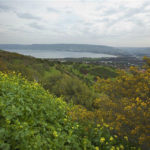 The country’s western strip, stretching from Rosh Ha-Nikra in the north to the Sinai Peninsula in the south. The plain is 4-7 kilometers wide in the north, expanding as it moves southward to about 50 kilometers. The soil in the coastal plain is fertile; there are several water sources, and the region includes the country’s major transportation arteries. The coastal plain is densely populated with most of Israel’s major cities, including Tel-Aviv and Haifa. The plain is divided from north to south into the Galilee Plain, the Acre Plain, the Carmel Plain, the Sharon Plain, the Mediterranean Coastal Plain, and the Southern Coastal Plain. East of the coastal plain are the lowlands – moderate hills that create a transitional region between the coast and the mountains.
The country’s western strip, stretching from Rosh Ha-Nikra in the north to the Sinai Peninsula in the south. The plain is 4-7 kilometers wide in the north, expanding as it moves southward to about 50 kilometers. The soil in the coastal plain is fertile; there are several water sources, and the region includes the country’s major transportation arteries. The coastal plain is densely populated with most of Israel’s major cities, including Tel-Aviv and Haifa. The plain is divided from north to south into the Galilee Plain, the Acre Plain, the Carmel Plain, the Sharon Plain, the Mediterranean Coastal Plain, and the Southern Coastal Plain. East of the coastal plain are the lowlands – moderate hills that create a transitional region between the coast and the mountains.
Mountain region
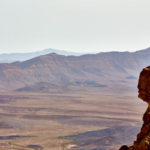 The mountainous region stretches from Lebanon in the north to Eilat Bay in the south, between the coastal plain and the Jordan Valley Rift. Its highest peaks are the Galilee’s Mt. Meron at 1,208 meters above sea level, Samaria’s Mt. Ba’al Hatsor at 1,016 meters and the Negev’s Mt. Ramon at 1,037 meters above sea level. Most of the less densely populated mountainous region is stone or rocky ground. The climate in the northern mountainous regions is Mediterranean and rainy, while the southern sections are a desert. The key stretches of the mountainous region are the Galilee in the north, the Carmel, the hills of Samaria, the Judean hills, and the Negev highlands. The contiguity of the mountainous region is interrupted at two points by major valleys – the Yizre’el (Jezre’el) Valley separating the Galilee mountains from the hills of Samaria, and the Be’er Sheva-Arad Rift separating the Judean hills from the Negev highlands. The eastern slopes of the Samarian hills and Judean hills are the Samarian and Judean deserts.
The mountainous region stretches from Lebanon in the north to Eilat Bay in the south, between the coastal plain and the Jordan Valley Rift. Its highest peaks are the Galilee’s Mt. Meron at 1,208 meters above sea level, Samaria’s Mt. Ba’al Hatsor at 1,016 meters and the Negev’s Mt. Ramon at 1,037 meters above sea level. Most of the less densely populated mountainous region is stone or rocky ground. The climate in the northern mountainous regions is Mediterranean and rainy, while the southern sections are a desert. The key stretches of the mountainous region are the Galilee in the north, the Carmel, the hills of Samaria, the Judean hills, and the Negev highlands. The contiguity of the mountainous region is interrupted at two points by major valleys – the Yizre’el (Jezre’el) Valley separating the Galilee mountains from the hills of Samaria, and the Be’er Sheva-Arad Rift separating the Judean hills from the Negev highlands. The eastern slopes of the Samarian hills and Judean hills are the Samarian and Judean deserts.
Jordan Valley Rift
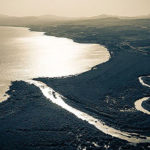 The rift extends the entire length of Israel from the northern town of Metula to the Red Sea in the south. The rift was caused by seismic activity, and is part of the Afro-Syrian rift which extends from the Syrian-Turkish border to the Zambezi River in Africa. Israel’s largest river, the Jordan, flows through the Jordan Valley and includes Israel’s two lakes: the Kinneret (Sea of Galilee), the largest body of fresh water in Israel, and the salt water Dead Sea, the lowest point on earth. The Jordan Valley is divided from north to south into the Hula Valley, the Kinneret Valley, the Jordan Valley, the Dead Sea Valley and the Arava.
The rift extends the entire length of Israel from the northern town of Metula to the Red Sea in the south. The rift was caused by seismic activity, and is part of the Afro-Syrian rift which extends from the Syrian-Turkish border to the Zambezi River in Africa. Israel’s largest river, the Jordan, flows through the Jordan Valley and includes Israel’s two lakes: the Kinneret (Sea of Galilee), the largest body of fresh water in Israel, and the salt water Dead Sea, the lowest point on earth. The Jordan Valley is divided from north to south into the Hula Valley, the Kinneret Valley, the Jordan Valley, the Dead Sea Valley and the Arava.
Golan Heights
The hilly Golan region is east of the Jordan River. The Israeli Golan Heights are the end of a large basalt plain, mostly located in Syria. North of the Golan Heights is Mt. Hermon, Israel’s highest peak at 2,224 meters above sea level.
Climate
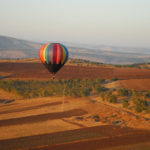 Israel is in a subtropical region, with two seasons: a hot, dry summer period and a cold, semi-wet to wet winter period. Nonetheless, under general influences such as Israel’s position between a sea and a desert, and more localized influences such as altitude and distance from the sea, Israel’s climate is varied, offering tourists the winter choice between skiing on Mt. Hermon and swimming in the Bay of Eilat.
Israel is in a subtropical region, with two seasons: a hot, dry summer period and a cold, semi-wet to wet winter period. Nonetheless, under general influences such as Israel’s position between a sea and a desert, and more localized influences such as altitude and distance from the sea, Israel’s climate is varied, offering tourists the winter choice between skiing on Mt. Hermon and swimming in the Bay of Eilat.
Israel has three climatic regions: the prevalent climate in most of central and northern Israel is Mediterranean, characterized by hot summers and rainy winters. The coastal plain is humid during the summer and comfortable during the winter, while in the mountains summer is dry and winter can get quite cold. Southern and eastern parts of Israel have desert climates with hot, dry weather and substantial day-night temperature differences. Between the desert and Mediterranean regions, is the semi-arid zone, with a transitional climate.
Israel is a land of bright sunshine, and the amounts of light and radiation are among the highest in the world. This ensures a good suntan, but requires appropriate protection.
Most of Israel’s precipitation is winter rains. Mt. Hermon gets snow every year and a few of the higher peaks see occasional snow in winter. In most of the Mediterranean climate zone, more than 400 millimeters of rain fall annually, while in the desert regions, rainfall is less than 250 millimeters. Rainfall in the semi-arid region ranges between 300 and 400 millimeters. Although the rainy season lasts from October through May, most of the rain falls between December and February.
The hottest months of the dry season are July and August. During September-November and April-June, temperatures are comfortable and there is little rainfall, making for ideal beach going weather and pleasant hiking in the desert regions. Visitors to Israel in the summer should bring light clothing and bathing suits. Winter visitors should have warm clothes and umbrellas. Israel’s winter is fairly comfortable and hiking outdoors is a pleasant option. In an unusually wet week, the southern port city of Eilat always offers refuge from the rain.
Rivers and Seas
 With little rainfall, the water in most of Israel’s streams is seasonal. Israel’s largest river is the 250-kilometer Jordan which runs from the Hula Valley south through the Kinneret to the Dead Sea. The Jordan originates in three short tributaries – Dan, Hermon and Snir – which travel through lovely landscape and attract many tourists.
With little rainfall, the water in most of Israel’s streams is seasonal. Israel’s largest river is the 250-kilometer Jordan which runs from the Hula Valley south through the Kinneret to the Dead Sea. The Jordan originates in three short tributaries – Dan, Hermon and Snir – which travel through lovely landscape and attract many tourists.
There are also a number of perennial rivers in the coastal plain, including the Taninim (crocodiles) and Yarkon Rivers. Several steep streams descend eastwards from the mountainous region, some creating beautiful canyons (including Amud, Tirtsa, Prat, Kidron and Arugot). Israel’s largest streams cut impressive canyons through the Negev landscape. The most prominent southern streams include Tse’elim, Tsin, Paran, Besor and Ha-Arava. In the winter months, there is a danger of flooding in the Negev streams.
Israel’s main bodies of water are the Kinneret and Dead Sea. The Kinneret is the largest body of fresh water, a popular swimming site and also the location of many of Christianity’s holy sites. The Dead Sea, the lowest point on earth, attracts many nature-lovers as well as tourists interested in the waters’ curative powers. The rest of Israel’s bodies of water, including the remnants of the Hula Lake, are much smaller.
Fauna and Flora
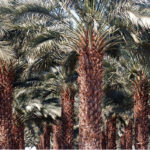 Due to its location at a climatic and geographical crossroads, Israel offers a surprising wealth of plant life. Israel boasts a total of approximately 2,380 kinds of flora, including many endemic varieties found only here. The variety of flora is much larger than many far bigger countries.
Due to its location at a climatic and geographical crossroads, Israel offers a surprising wealth of plant life. Israel boasts a total of approximately 2,380 kinds of flora, including many endemic varieties found only here. The variety of flora is much larger than many far bigger countries.
The largest concentration of plant life can be found in the Mediterranean region, mostly in the forms of thicket and undergrowth. Much of Israel has been deforested by mankind, although there are a few impressive remnants of indigenous forest in the mountainous regions (for instance on Mt. Carmel and Mt. Meron in the Galilee). In the desert regions, plant life is sparse, with a few enclaves of subtropical species such as at Ein Gedi and in the Jordan Valley. The semi-arid region has both desert and Mediterranean plant life.
Israel has several botanical gardens, such as at the Hebrew University of Jerusalem’s Mt. Scopus campus, which is dedicated entirely to Israel’s wild plant life.
Wildlife
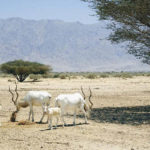 Israel provides a habitat for rich wildlife, including animals originating in various zoogeographical regions that surround the country. This is particularly evident among insect and bird varieties, although reptiles and mammals are also well-represented. Israel has about 100 kinds of wild mammals, an impressive number in contrast to the 140 varieties of wild mammals living in all of Europe. Animals that originate in the cooler European region are found alongside mammals originating in desert regions of Arabia and Egypt with mammals that originate in Africa and in the Indian subcontinent. Although many Israeli mammals are rare or nocturnal, several are easily spotted including deer, ibex, hyrax and jackals. Among the country’s zoos are the Biblical Zoo in Jerusalem, the Safari Park in Ramat Gan and the Khai Bar Reserve near Yotveta in the Arava.
Israel provides a habitat for rich wildlife, including animals originating in various zoogeographical regions that surround the country. This is particularly evident among insect and bird varieties, although reptiles and mammals are also well-represented. Israel has about 100 kinds of wild mammals, an impressive number in contrast to the 140 varieties of wild mammals living in all of Europe. Animals that originate in the cooler European region are found alongside mammals originating in desert regions of Arabia and Egypt with mammals that originate in Africa and in the Indian subcontinent. Although many Israeli mammals are rare or nocturnal, several are easily spotted including deer, ibex, hyrax and jackals. Among the country’s zoos are the Biblical Zoo in Jerusalem, the Safari Park in Ramat Gan and the Khai Bar Reserve near Yotveta in the Arava.
About 510 species of birds have been spotted in Israel, most of them migratory species that fly through in the fall and spring. Israel is a bottleneck on many migration paths, and millions of birds pass through in the two seasons. Migrations can be observed in the Hula Reserve, the bird site at Kibbutz Kfar Ruppin in the Beit She’an valley, as well as at the Kibbutz Lotan Bird Watching Center in the Arava and at the International Birding and Research Center in Eilat.
At Israel’s southern tip, on the coast of the Red Sea, there is a rich world of marine life, including tropical fish and colorful coral. Many can be observed at Eilat’s Underwater Observatory and Marine Museum, or by scuba diving in the area.
Israel Past and Present
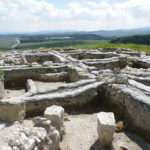 The traveler to Israel walks through history: from windswept crusader castles to ports where seamen, pilgrims and famous travelers spent some time and then moved on; from desert landscapes that were home to traveling tribes, half forgotten armies and merchants in camel caravans, to sheikhs’ tombs with whitened domes, silent monasteries and ancient synagogues decorated with colorful mosaics.
The traveler to Israel walks through history: from windswept crusader castles to ports where seamen, pilgrims and famous travelers spent some time and then moved on; from desert landscapes that were home to traveling tribes, half forgotten armies and merchants in camel caravans, to sheikhs’ tombs with whitened domes, silent monasteries and ancient synagogues decorated with colorful mosaics.
The State of Israel was created in the Land of Israel which was promised to the People of Israel according to Jewish tradition. It was where Jesus, the Christian Messiah, was born and the place where Mohammed, the Moslem Prophet, ascended to heaven. The meeting place of three continents and two seas, the country is a skein of cultures, customs and traditions, a country that was home to many people, cultures and changing religions. On the crossroads of ancient routes of commerce, the land also saw waves of conquering armies: the Canaanites, Hebrews, Babylonians, Persians, Greeks, Romans, Arabs, Crusaders, Ottoman Turks and the British made this much-desired small country into a battlefield where they strove for eminence, built fortifications, castles and royal palaces.
Settlement and Conquest –The Land of Israel in Biblical Times
The Canaanite tribes were the first settlers in Israel and its principal inhabitants till the second millennium BCE. In this early time the country was already a meeting place of different cultures: Egypt to the south, Assyria, Mesopotamia and Asia Minor to the north. During the second millennium BCE several tribes started an invasion of the country, including the Philistines who came from the Aegean and settled in the southern coastal plain, and the Hebrews who came from Mesopotamia and settled in the hills.
The Hebrews, known as the Sons of Israel lived in the framework of 12 tribes who were united towards the end of the second millennium BCE by the first King of Israel, Saul. His successor, David, expanded the borders of the country and made Jerusalem, till then a Jebusite city, into his capital. It was here that his son King Solomon built the Temple with the Holy Ark. After Solomon’s death the kingdom was divided into two, with the ten northern Tribes setting up the Kingdom of Israel while the remaining two tribes set up the Kingdom of Judah in the Jerusalem Hills. In the year 721 BCE, the Kingdom of Israel was conquered by the Assyrians; the 10 tribes were sent into exile and are considered “lost” till this day. The kingdom of Judah was conquered by the Babylonians in the year 586 BCE, the Temple was destroyed and the Sons of Israel went into the first Babylonian exile.
Between Empires – From the Babylonians to the Byzantines
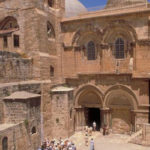 In the year 539 BCE, Babylon was conquered by the Persians and the tribe of Judah was allowed to return to Jerusalem, which was part of the Persian Empire. Jerusalem was erected from the rubble and the Second Temple was built. In the year 333 BCE, the Persian Empire, with the Land of Israel, was conquered by Alexander the Great, and in the year 66 BCE it was conquered by the Roman general Pompey. For the next 200 years the country was ruled by Jewish kings as a Roman vassal state. These were troubled times. In the year 70 CE the Temple was destroyed after a Jewish rebellion and in the year 135 BCE the Jews were sent into exile after another rebellion. Jerusalem was destroyed to its foundations and a Roman city was set up in its place.
In the year 539 BCE, Babylon was conquered by the Persians and the tribe of Judah was allowed to return to Jerusalem, which was part of the Persian Empire. Jerusalem was erected from the rubble and the Second Temple was built. In the year 333 BCE, the Persian Empire, with the Land of Israel, was conquered by Alexander the Great, and in the year 66 BCE it was conquered by the Roman general Pompey. For the next 200 years the country was ruled by Jewish kings as a Roman vassal state. These were troubled times. In the year 70 CE the Temple was destroyed after a Jewish rebellion and in the year 135 BCE the Jews were sent into exile after another rebellion. Jerusalem was destroyed to its foundations and a Roman city was set up in its place.
Jesus, the Christian messiah and the founder of Christianity, was born when the country was under Roman rule, but it took 300 years until Christianity was legitimized in the Roman Empire which in turn became Byzantium in the east.
As Christianity was legitimized and became the official religion, the view of the Land of Israel as the Holy Land developed. It became a destination for pilgrims and a huge building enterprise got under way with churches and monasteries built all over the country. It was at this time that parts of the Church of the Holy Sepulchre in Jerusalem and the Church of Nativity in Bethlehem were built. Remnants of the building from this era can be seen at Ovdat, Capernaum (Kfar Nakhum,) Khamat Gader and Latroun.
Between East and West – From the Moslem Conquest to the Crusaders
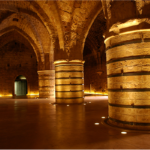 In the year 640, the country was conquered by the Moslem Caliph Omar, beginning the period of Moslem rule in the country. In this very important period for the entire region routes of communication were opened between the east and the west: goods, religious art and cultural and scientific knowledge started to flow from the East to Europe, mutually enriching each other.
In the year 640, the country was conquered by the Moslem Caliph Omar, beginning the period of Moslem rule in the country. In this very important period for the entire region routes of communication were opened between the east and the west: goods, religious art and cultural and scientific knowledge started to flow from the East to Europe, mutually enriching each other.
According to Moslem tradition, the Prophet Mohammed ascended to heaven from Jerusalem and as such it is perceived as the third holiest city. In the first years of Arab rule Christians were allowed to enter Jerusalem, but this was stopped in the 11th century, prompting Pope Urban II to call for the crusade to liberate Jerusalem from Moslem rule.
The first crusade ended with the conquest of Jerusalem in 1099. During the crusader era the country became one of the most important commercial centers in the world with routes of commerce connecting China, India, Madagascar and Africa to European markets. The crusader cities became meeting points for Moslem and Armenian Christian merchants and their European counterparts. The remnants of these crusader cities can be seen in Acre (Akko), Caesarea, Jerusalem, Latroun and Kil’at Namroud.
The crusader era did not last long. In the year 1187, the crusader armies were defeated by Saladin in the battle of Karnei Khitin (Hattin). The crusaders then lost successive battles ending with their defeat to the Mamluks in the battle of Acre, their last stronghold, in 1291. From the beginning of the Mamluk conquest the country diminished in its economic and political importance. The Ottoman conquest of 1517 did not add to its stature. The Land of Israel was a backwater in the Ottoman Empire and except for a few pilgrims of the three monotheistic religions, traffic between east and west declined.
From the Old to the New– The British Mandate and the creation of the State of Israel
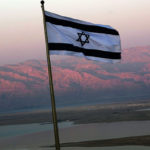 The turning point in the country’s importance came with Napoleon’s arrival in the country in 1799. Napoleon’s eastern campaign showed the west the country’s strategic and economic importance – a process that led to increased European involvement in the country. New routes of communication and travel were set up and Christian missionary institutions were set up in the country. More pilgrims started to come and Jews started to immigrate to the country. These and other events led to increased interest in the country – an interest that peaked with the British conquest in 1918 at the end of the First World War.
The turning point in the country’s importance came with Napoleon’s arrival in the country in 1799. Napoleon’s eastern campaign showed the west the country’s strategic and economic importance – a process that led to increased European involvement in the country. New routes of communication and travel were set up and Christian missionary institutions were set up in the country. More pilgrims started to come and Jews started to immigrate to the country. These and other events led to increased interest in the country – an interest that peaked with the British conquest in 1918 at the end of the First World War.
In the year 1948, the British Mandate came to an end and the state of Israel was created. It founders said in the Declaration of Independence: “The State of Israel will be open to the immigration of Jews and for the Ingathering of the Exiles from all countries of their dispersion; will promote the development of the country for the benefit of all its inhabitants; will be based on the precepts of liberty, justice and peace… will guarantee full freedom of conscience, worship, education and culture; will safeguard the sanctity and inviolability of the shrines and Holy Places of all religions…”
The State of Israel, set up at the meeting places of continents, history and cultures embodies this rich web of cultures. Its population includes different peoples and religions, religious and secular, Arab Moslems and Arab Christians, Druze, Bedouins, Circassians, Samaritans and Jews from 70 Diasporas, from East and Western Europe, North Africa, Asia, North and South America. The people are settled all over the country in the Negev, Arava, Galilee and coastal plain, in moshavim, kibbutzim, vivacious cities and quiet villages busily engaged in industry and commerce, farming and scientific research. All of these cultures, peoples and religions created a rich tapestry of tradition, beliefs and customs that encapsulate the holy and the secular, the past and the present, the east and the west.
Population
The State of Israel has some 7.4 million inhabitants. The most prominent characteristic of Israel’s the population is its high diversity. Besides the main division of the country’s inhabitants into Jews (80%) and Arabs (20%), there are many more subdivisions. The Jews, for example, are divided into religious and secular, while the latter include various immigrant communities who preserve their culture. Likewise, the Arabs are divided into Moslems, Christians and Druze. Alongside these groups, Israel has additional small ethnic religious groups such as the Circassians and the Samaritans, and small Christian communities from Europe such as the German Beit El community in Zikhron Ya’akov.
Another major characteristic of the Israeli population is its rapid growth rate, which is atypical for developed countries. Since the establishment of the State, the population of Israel has increased almost tenfold, mainly due to the immigration of Jews from round the world. Today, Israel is a densely populated country, even though large regions are thinly populated. The population of Israel is young (the median age is 28.3 years), its infant mortality rate is low (5.8 deaths for each 1,000 births), and the life expectancy is high (78.7 years).
Languages
Israel’s official languages are Hebrew and Arabic. English is the main language for purposes of external relations. Most Israelis speak English, and most of the signposts are also in English.
The most common language in Israel is Hebrew, which is spoken by six million people. Next comes Arabic, which is spoken by over a million people. Since Israel is a land of immigration, additional languages are spoken among the various immigrant communities, the major languages being Russian (some 900,000 speakers), Jewish-Arabic (300,000 speakers) and Yiddish (200,000 speakers).
Information for Visitors
Passport Control
Upon arrival in Israel, visitors undergo a security check and are requested to present a passport that is valid for at least six months, as well as entry forms with their personal details. It is important to ascertain that the details are filled out accurately, and to keep a copy of the form in order to present it upon departure from Israel.
Arrival by Air – Visitors arriving by air will receive forms to be completed in the course of their flight in order to prevent delays at the passport controls. It is important to ascertain that the details of the passenger and the flight on which he/she arrived are filled out accurately. Travelers will be requested to present their passport, a boarding pass and an entry form at passport control. After their passport has been stamped, incoming travelers continue to the passenger luggage area, where carts are at their disposal. From there, they continue to customs control and to the airport exit.
Arrival by Land – Visitors arriving at the borderline passes on the Israel-Egypt or Israel-Jordan border will receive forms in which their personal details must be filled in. After doing so and undergoing a security check, they must present the completed forms together with their passport.
Tourists continuing from Israel on to Arab countries (except Egypt and Jordan), please note: You can request that your passport not be stamped with an Israeli stamp. You must notify the clerk of your request before your documents are stamped. The granting of such requests is at the discretion of the authorities.
Israeli Currency
The State of Israel’s currency is the New Israel Shekel (NIS) or shekel for short (pluralized as shekalim in Hebrew or shekels in English). There are 100 agorot (agora in singular) in each shekel. Bank notes are in denominations of NIS 20, 50, 100, and 200; coins are in denominations of NIS10, NIS5, NIS1 and 50, 10 and 5 agorot.
Changing Money
Unlimited sums of local and foreign money may be brought into Israel as cash, travelers’ checks, credit cards or State of Israel bonds. Foreign currency of all kinds may be exchanged at the airport, banks, post offices, most hotels or licensed exchange agencies in large cities. A passport is required when exchanging travelers’ checks. The rates vary from place to place, and banks charge a commission. It is recommended, though not obligatory, to carry a small amount of US dollars, since certain tourist sites, especially in the Old City of Jerusalem, take payment in dollars.
Cash Withdrawal
Holders of international credit cards can withdraw local or foreign currency at banks which accept their credit cards. There are Automated Teller Machines outside most banks.
Purchases and Payments
All goods and services may be purchased with the following currencies, which can be freely exchanged: Euro; Australian Dollar; US Dollar; Hong Kong Dollar; New Zealand Dollar; Singapore Dollar; Canadian Dollar; Japanese Yen; Danish Krone; Norwegian Krone; Swedish Krona; Pound Sterling; Swiss Franc; South African Rand. Nevertheless, storeowners and service providers are not required to accept foreign currency and are permitted to give change in shekels even if payment was made in foreign currency.
Tourists who pay for goods and services in foreign currency are exempt, in certain cases, from VAT (Value Added Tax). In addition, some businesses in Israel are registered with the Ministry of Tourism program for refunding tourist VAT payments. These merchants are required to inform their customers of this arrangement, and to provide them with an invoice which they must present at their point of departure from Israel together with their purchase in a sealed package. The VAT, less a commission, will be returned on the spot. Those departing from Haifa, Ashdod or Eilat will have the VAT returned to the address on the invoice. If the amount to be reimbursed exceeds $1,000, it will be sent after the invoice is verified with the tax authorities.
The minimum amount of purchase eligible for VAT refund is $100, including VAT. In Eilat, where VAT is not collected, the minimum purchase for VAT refund is $200, including VAT. The sale of jewelry whose shekel value equals $200, including VAT, will not be VAT-exempt.
To receive VAT refund, ensure that you get a receipt with a list of all the items you have purchased and details of the purchaser. The receipt and purchases must be put into a sealed bag. Tourists must then go to the “Change Place” at Ben Gurion airport or other exit port. If you wish to send the items that you purchased with your luggage, you must declare the purchase at the security check, and present your passport, flight ticket, purchases and receipts at the counter. The attendant will open the bag, examine the contents, sign the receipt, and refund the VAT in any currency minus a commission. The VAT refund can also be sent to your address abroad for an additional charge.
There is no VAT refund for the following items: food, drinks, tobacco products, electrical appliances, cameras, film or other photography equipment.
Major credit cards – American Express, Diners, Visa, Mastercard/Access/Eurocard – are widely accepted in Israeli restaurants, stores, hotels, museums, etc.
Tips and Bargaining
In Israel it is customary to tip primarily in restaurants. When the bill does not include service, a 12% tip should be added to the payment. In hotels, one tips the bellhop or any other service provider. Taxi drivers are generally not tipped.
Bargaining is acceptable in Israel, but not everywhere. In the open-air markets, do not hesitate to bargain as it is part of the experience and doing so can lower the price. Storekeepers are legally required to display prices and for the most part are not open to bargaining. This is also true of restaurants and public transportation. Passengers are advised to ask cab drivers to turn on the meter, thus avoiding unnecessary haggling.
Banks
Various banks have branches in the large cities and in smaller communities. Most banks are open from 8:30 am until 12 noon Sunday to Thursday, and 4–6pm on Sunday, Tuesday and Thursday. On Fridays and Jewish holiday eves, banks are open from 8:30 am until 12 noon. All banks are closed on Shabbat. Most of the large hotels have banks which often offer additional, more convenient hours.
Electrical Appliances
The Israeli power supply is single phase 220 volts at 50 Hertz. Most power sockets in Israel have three pin holes, but many of them will work with double-pin European plugs. Visitors who want to use shavers, traveling irons and other small appliances may need both transformers and adapter plugs.
Communications
Israelis strongly embrace technology and communication. Indeed, many of the world’s instant messaging and communication systems were invented in Israel.
News – Almost every hotel room has cable TV with access to the international cable news channels. Israel TV has a daily news broadcast in English. The English-language Jerusalem Post and Haaretz newspapers are published daily except Saturday. The International Herald Tribune is printed six days a week in Tel Aviv and includes the English language version of Haaretz.
Telephone – Telephone service in Israel is world-class. The country-code for Israel is 972. Israeli area codes commence with a zero for local calls (e.g. 02-123-4567), but if you are calling Israel from overseas, drop the zero (i.e. +972-2-123-4567).
Cell phone – Per capita, more Israelis have cell phones than any nationality on earth. Even children have them. If your U.S. cell-phone and/or handheld wireless device is programmed for international service, it will work automatically in Israel. Inquire with you cellular provider about short-term international programs and pricing which may be available. Alternatively, cell-phones can be rented prior to your departure or picked up in Israel at the airport in Israel.
Public phones – There are public phones throughout Israel. You’ll need to buy a “Telecart” magnetic card to use them: they’re readily available at newsstands, supermarkets, post offices or at your hotel front desk.
Internet and E-mail – Just as with cell-phones, Israelis – per capita – own more PCs than any other nationality in the world. Almost every hotel has internet access – in-room and/or wi-fi and/or at its Business Center. Internet cafes can be found everywhere too. Laptops are always dual-voltage so all you’ll need is a European-style two-pin converter plug that will work in Israel.
Post office – Post offices are everywhere, and are the ideal place to buy stamps, mail letters or packages. Most hotels’ front desks or concierges have stamps too.
What to Pack
Comfortable, casual clothing that can be layered to match the weather is a good suggestion. Planning your wardrobe around one or two colors is also helpful. You may choose to bring along one dressy outfit but it is not necessary. Be sure to include comfortable walking shoes and a lightweight jacket for mornings and evenings. A raincoat and rain hat (or poncho) is easier to use when sightseeing than an umbrella. The above climate listings will allow you to plan accordingly for Israel. Women should always dress modestly when visiting religious sites. When entering religious sites in Jerusalem women need to make sure their legs are covered to at least below the knee. Also, be sure to cover shoulders. Do not over-pack. Leave room in your suitcase for souvenirs. If you are traveling with a companion, cross-pack. Put half of your items in your companion’s luggage and vice-versa. This will ease the frustration of possible lost luggage. Take along a small backpack. When you are touring, fill it with bottled water, tissues, notebook and pen. It will also come in handy for carrying souvenirs. Don’t forget these travel sized necessities: sewing kit, first-aid kid, tissues, travel clock, toiletries, notebook and pen, pre-printed address labels (for sending postcards), plastic “zip-locking” bags (for storing open bottles and containers). Purchase batteries in the US. Remember to bring extra disks for your video camera. Fluids: To avoid dehydration which is very common in extremely dry climates, drink plenty of water. Carry bottled water with you when touring. People with sensitive digestive systems need to be prepared by purchasing diarrhea medication ahead of time to take with you.
In Israel
Show respect for the religious observances throughout Israel – do not eat or drink in or around religious shrines. Be sure to ask permission before taking pictures of people and do not photograph anything with military significance or remotely connected with the government in Israel.

